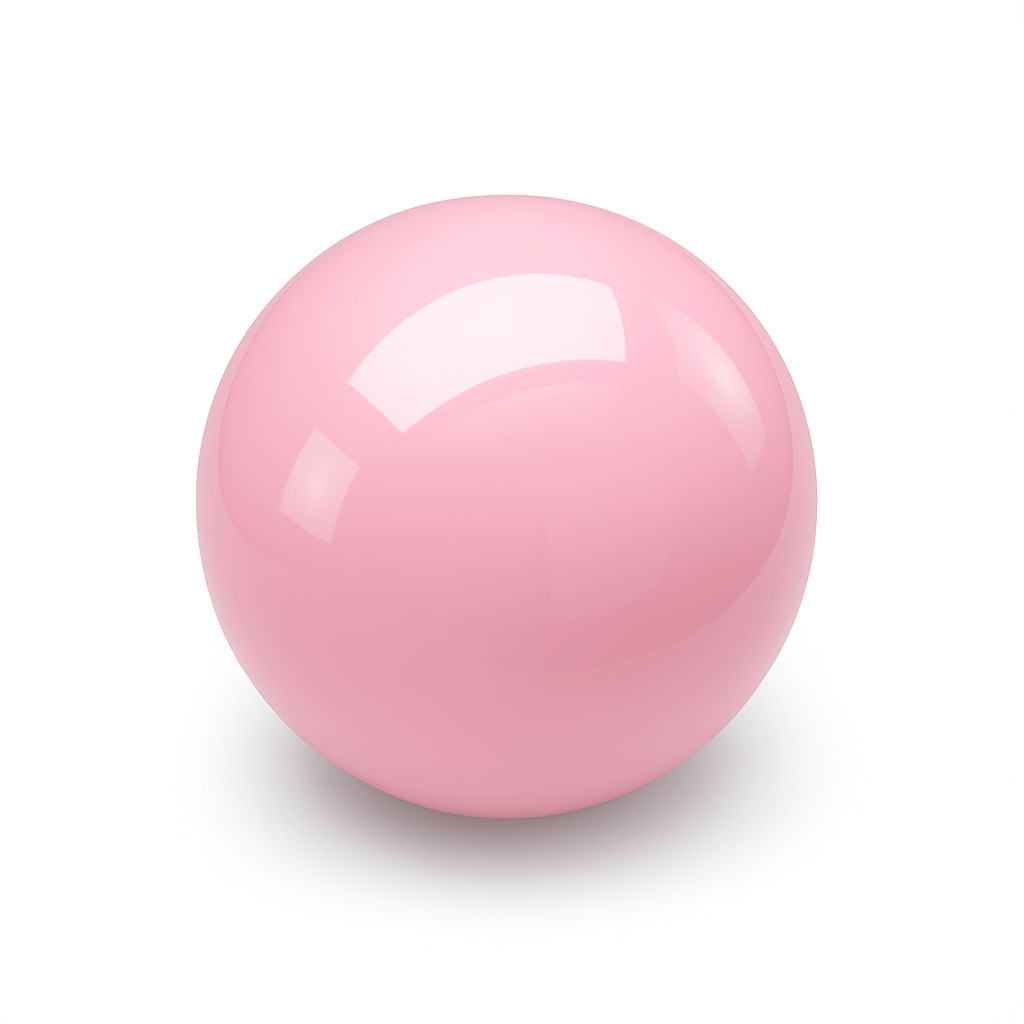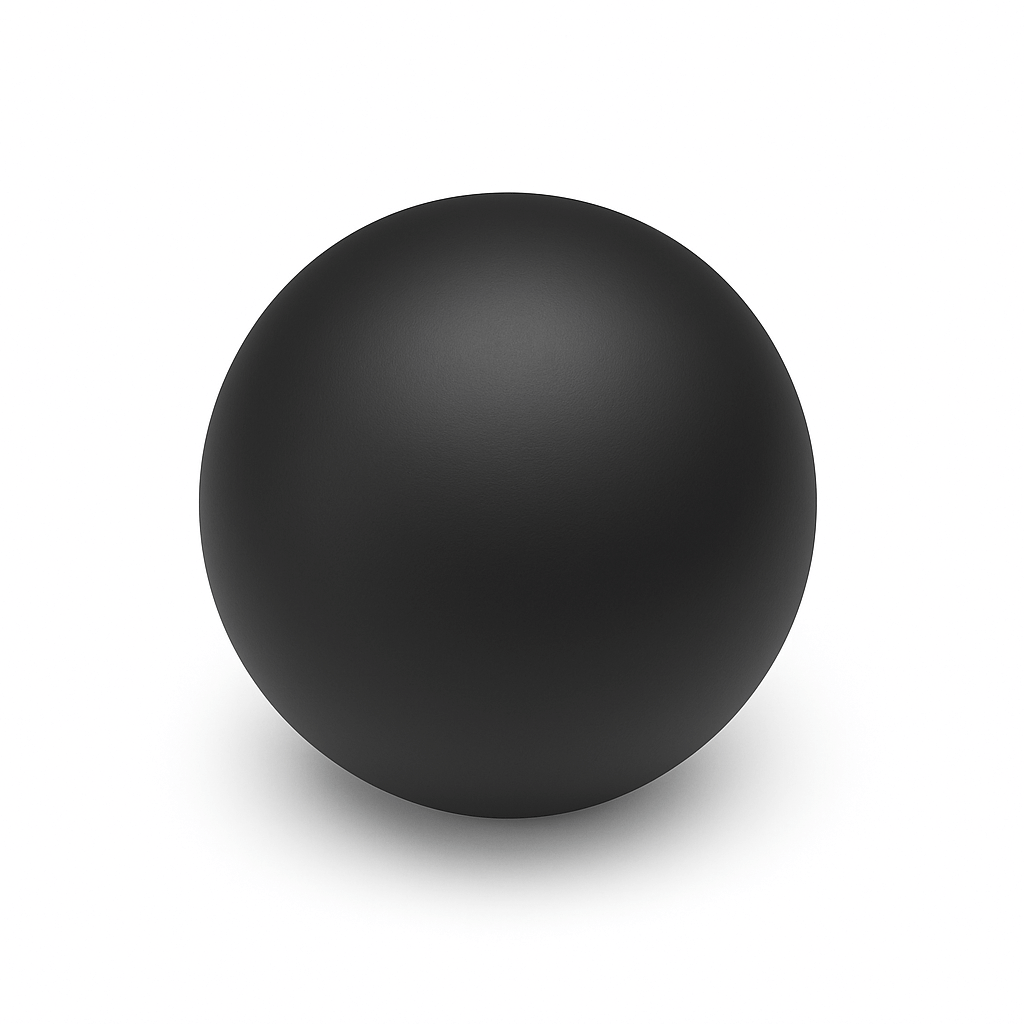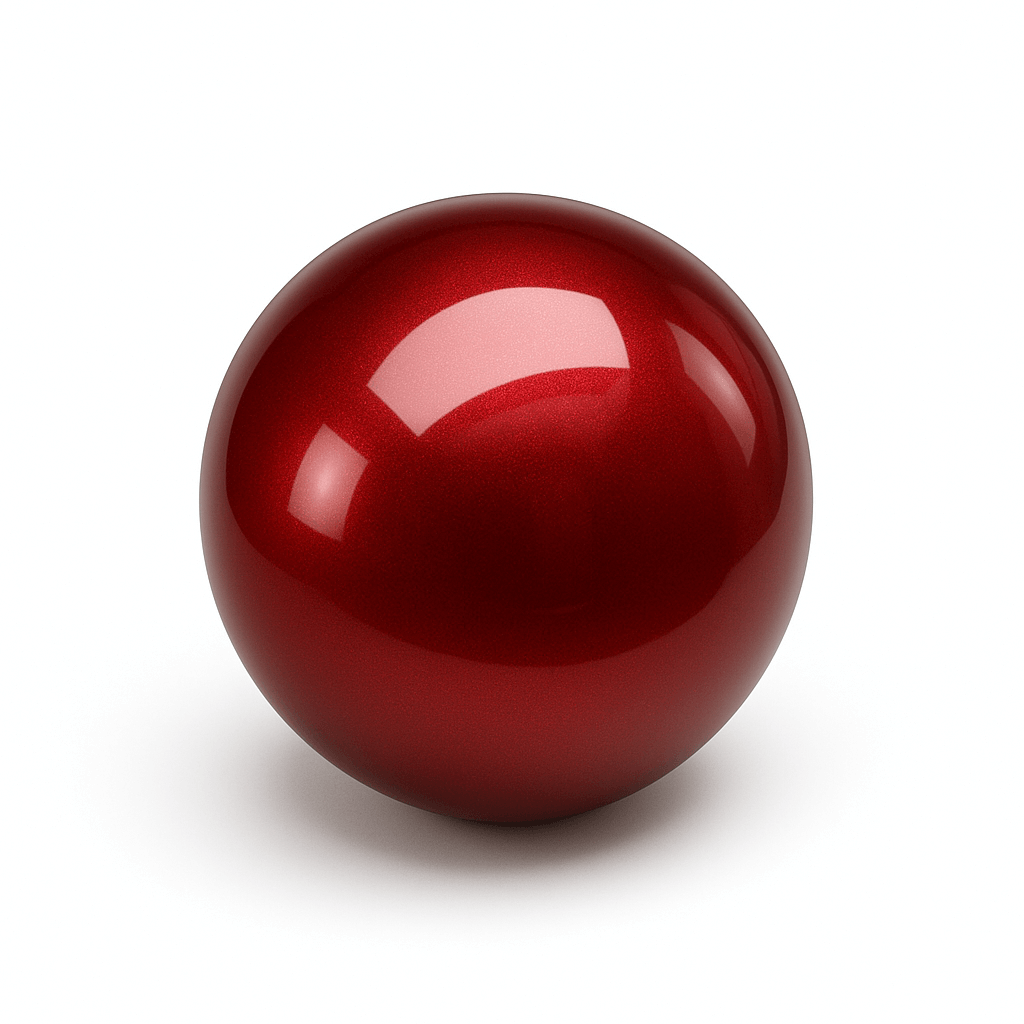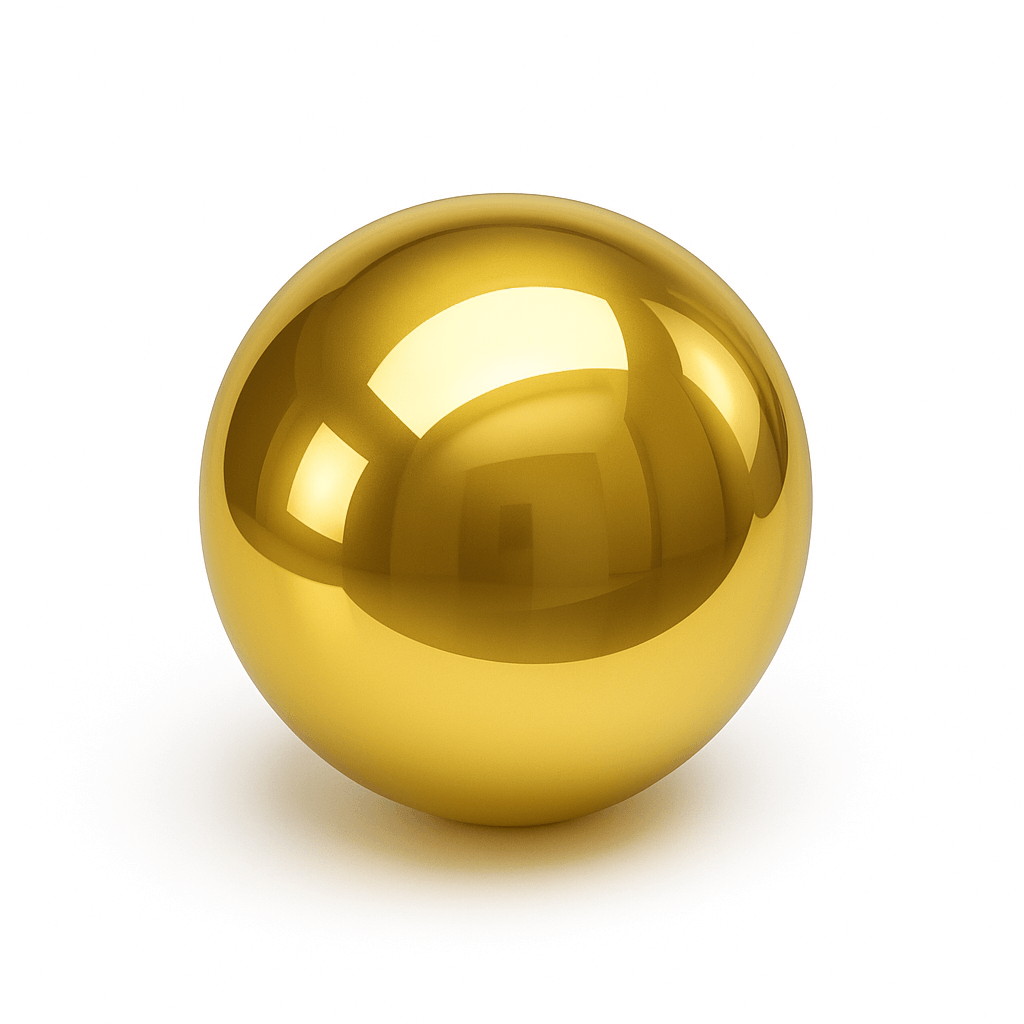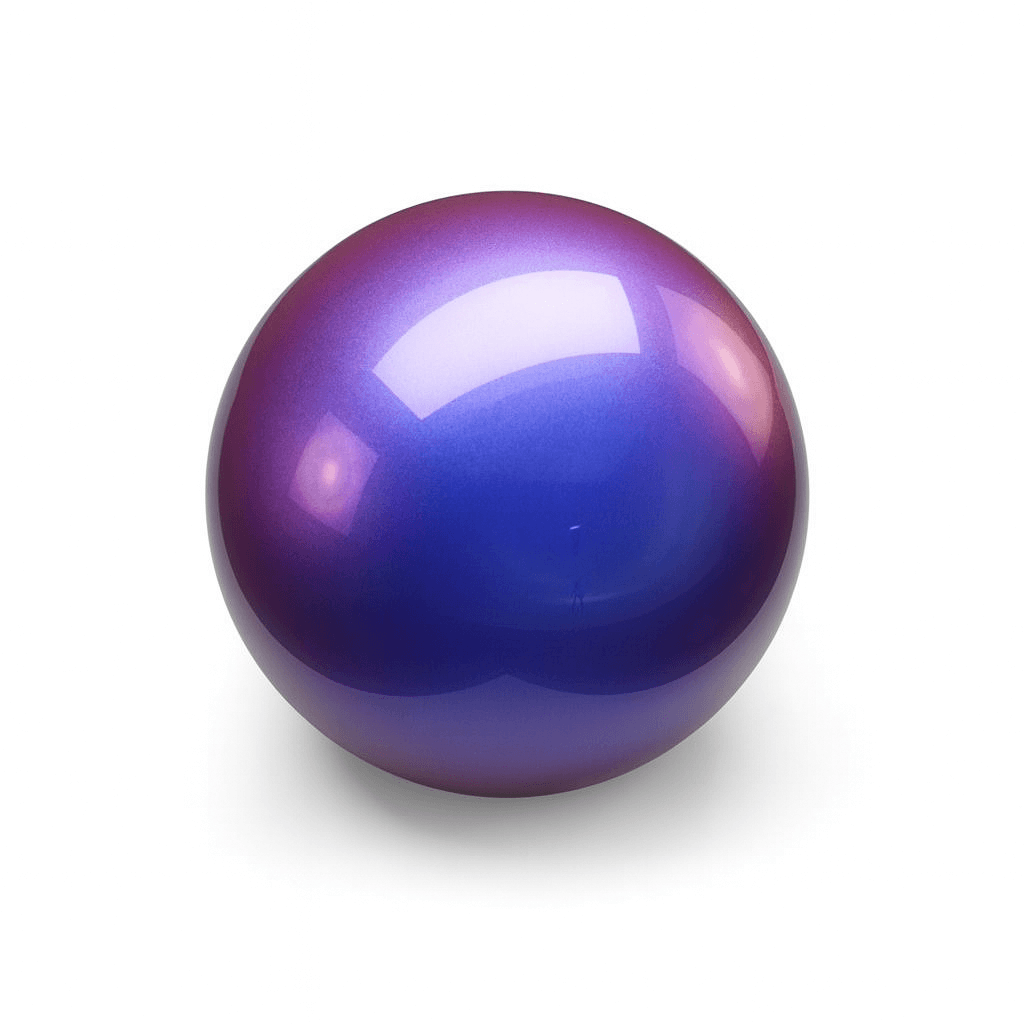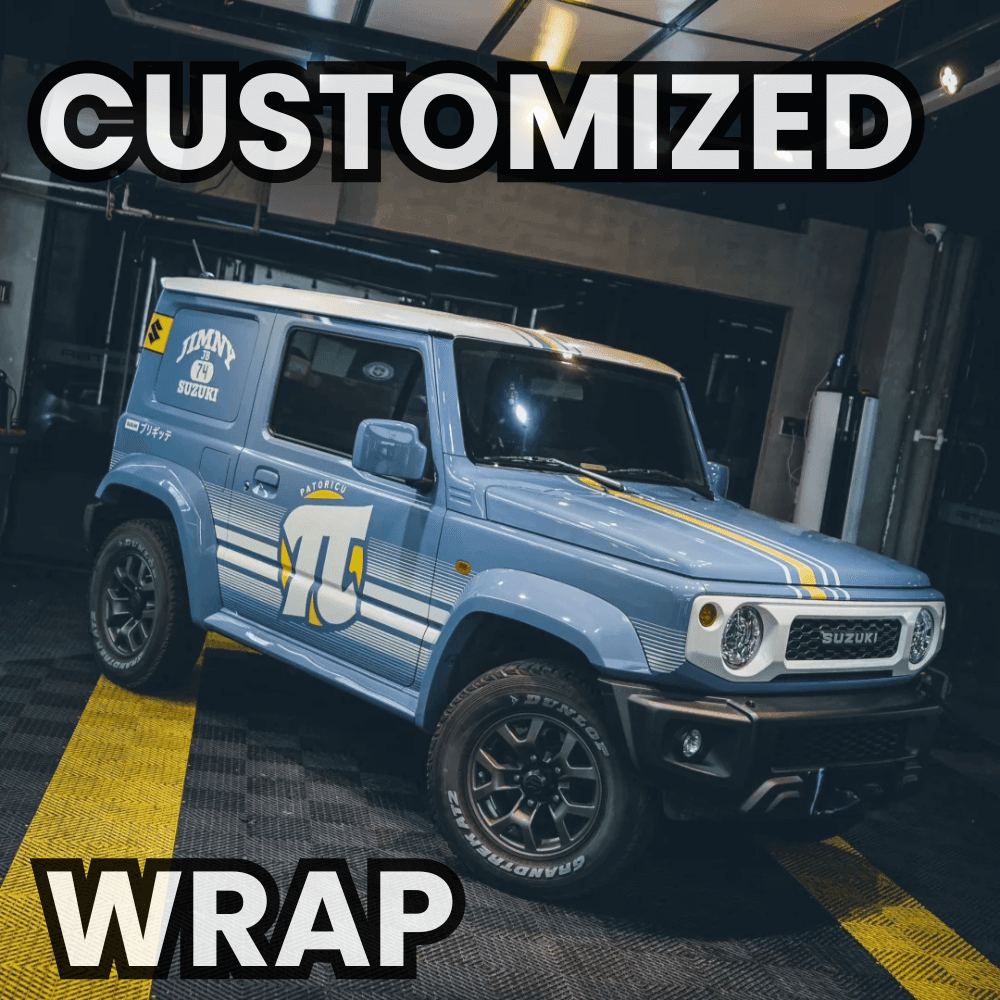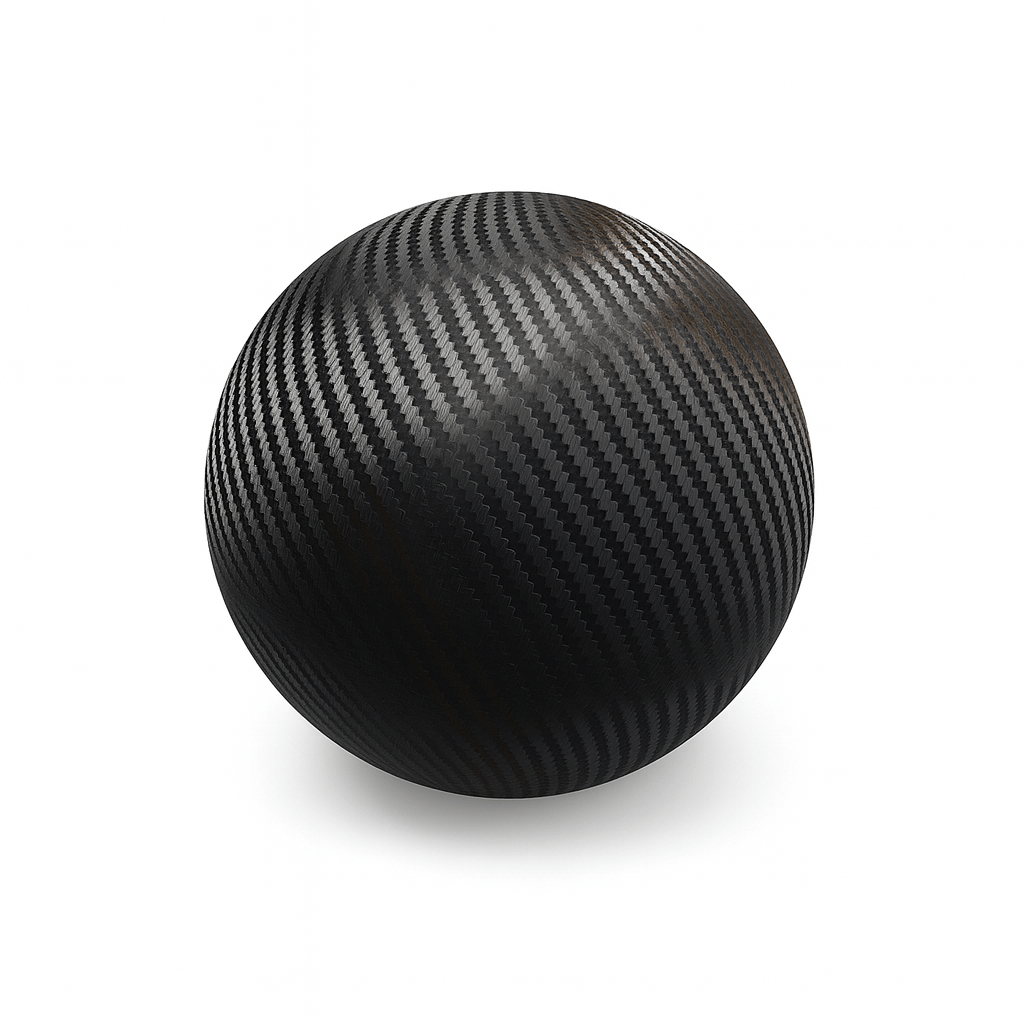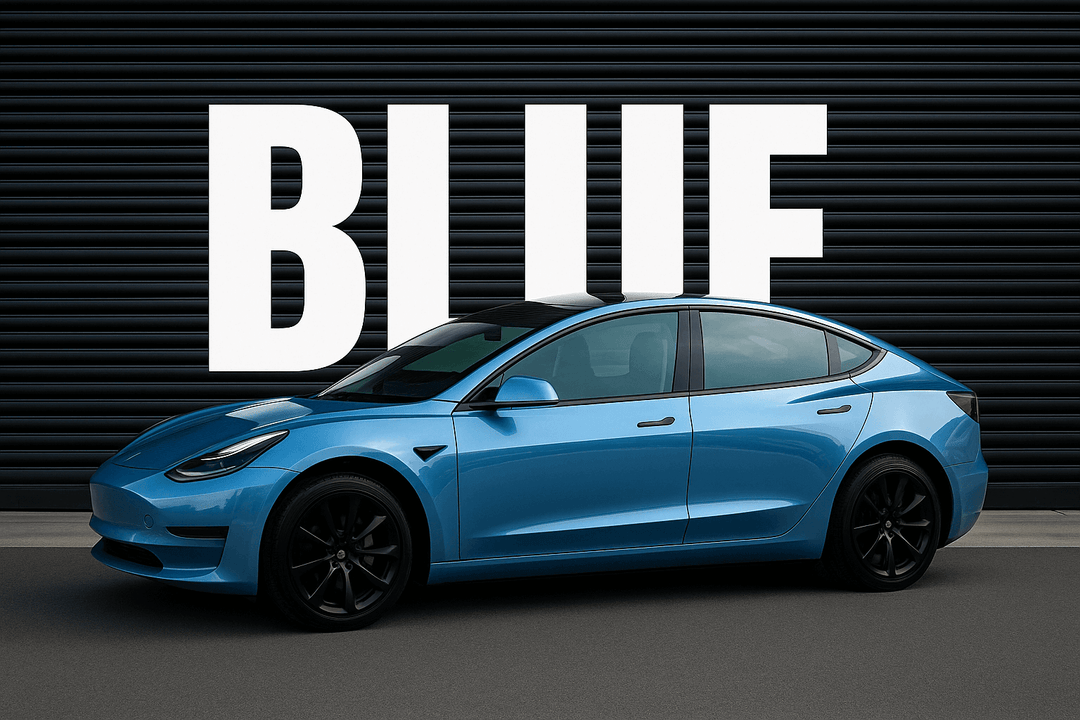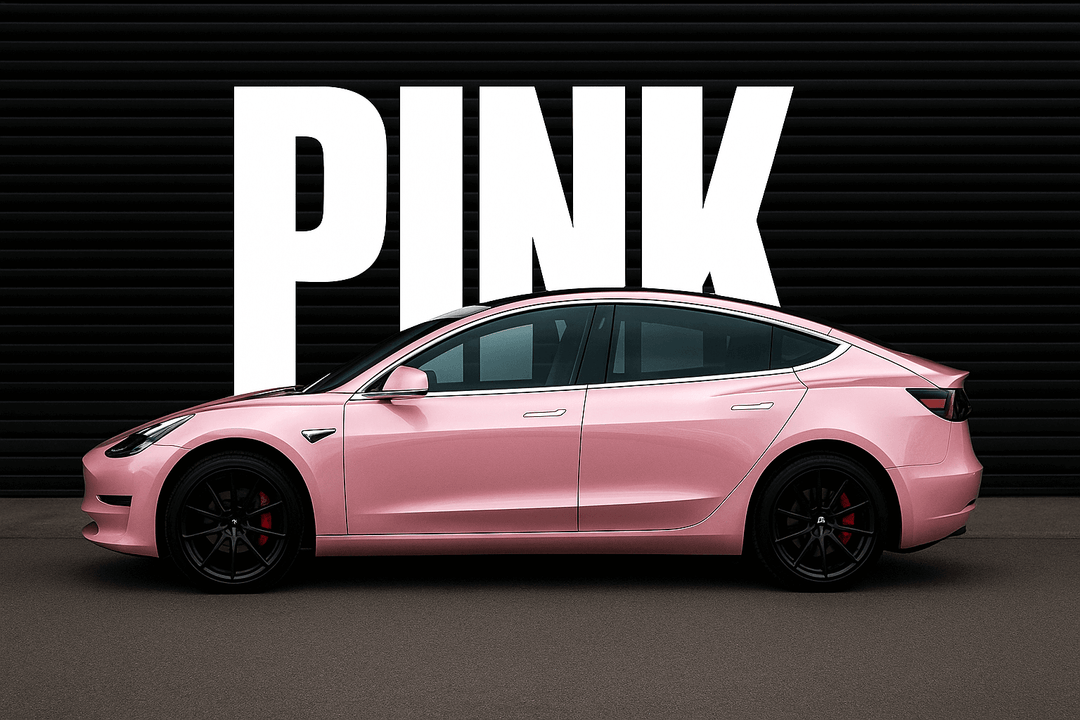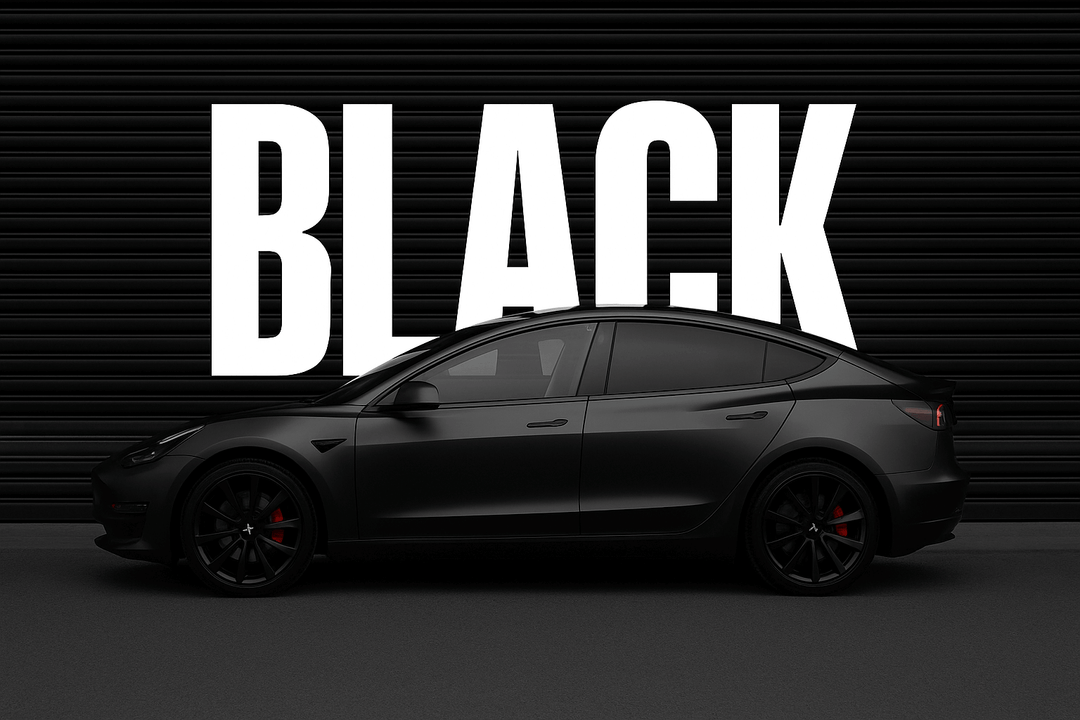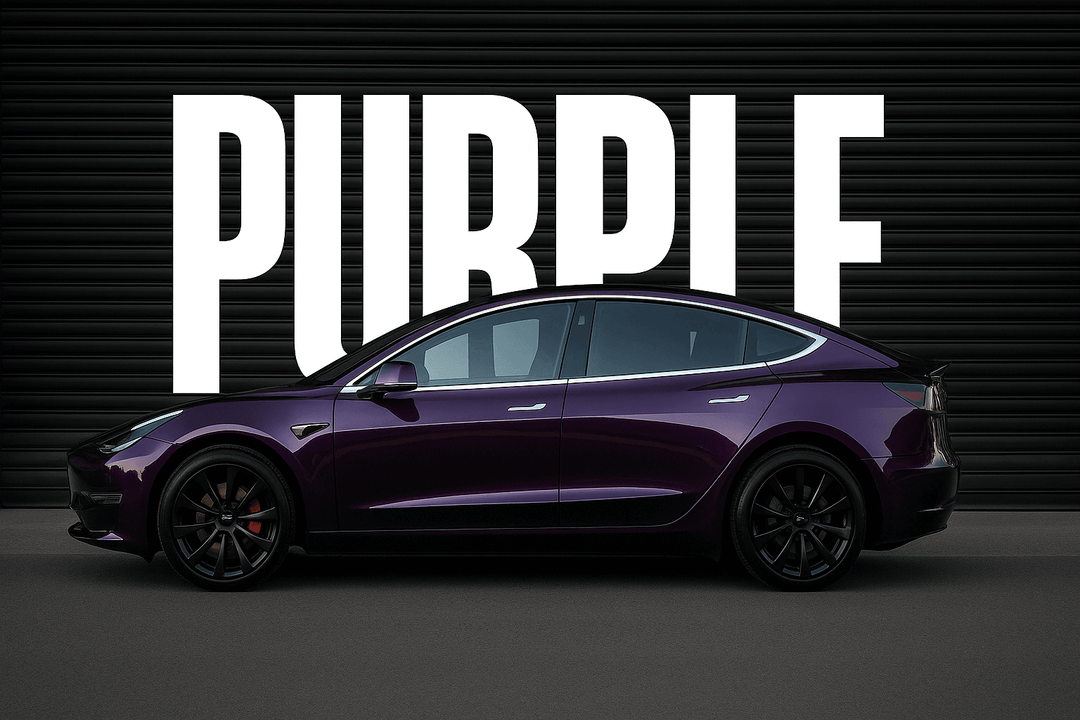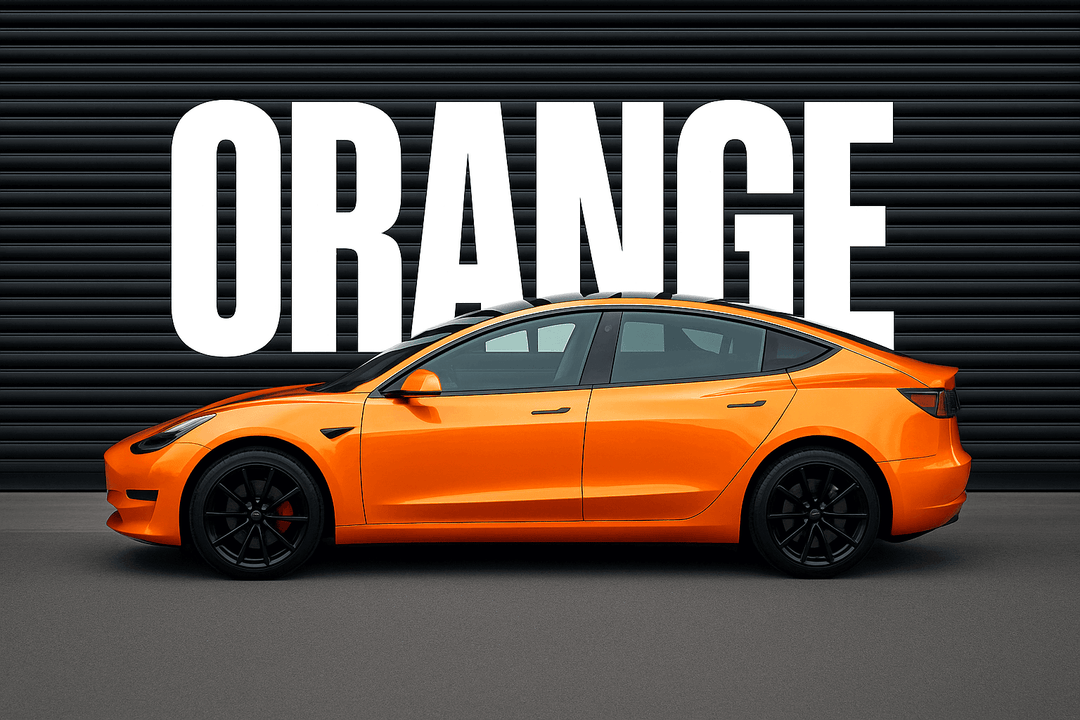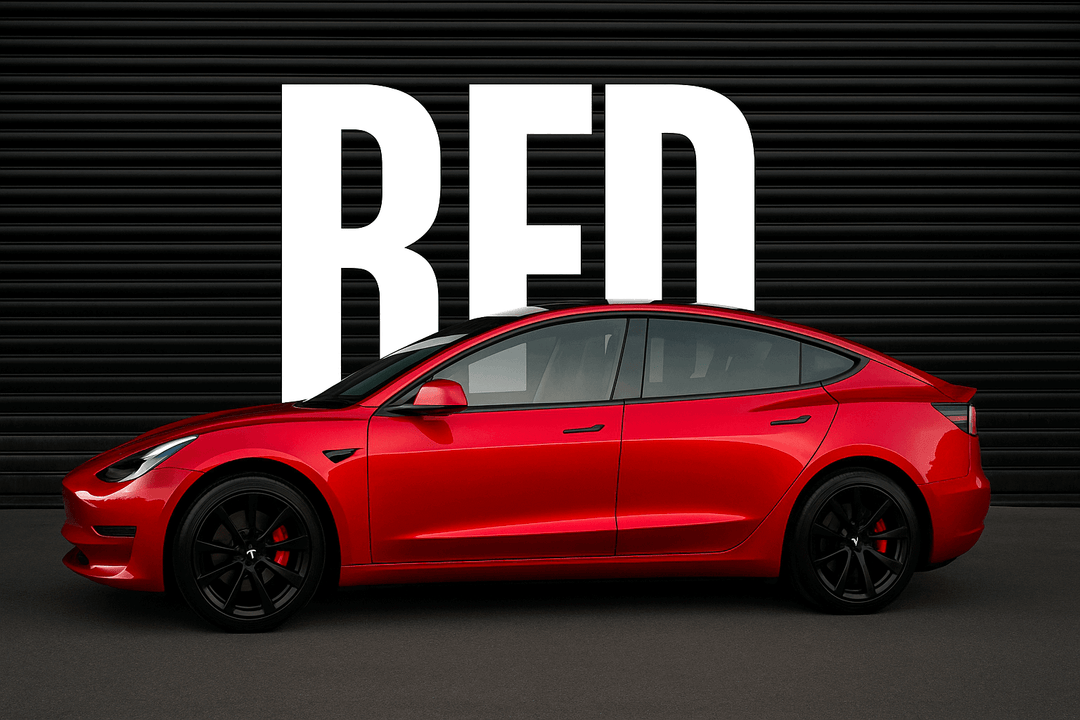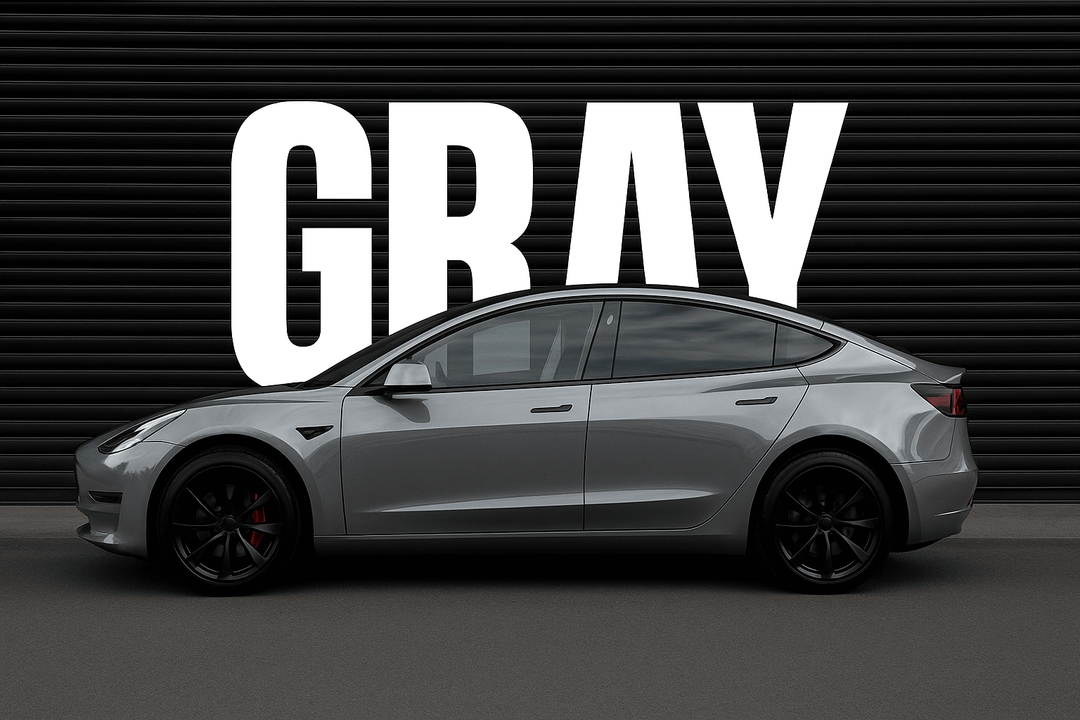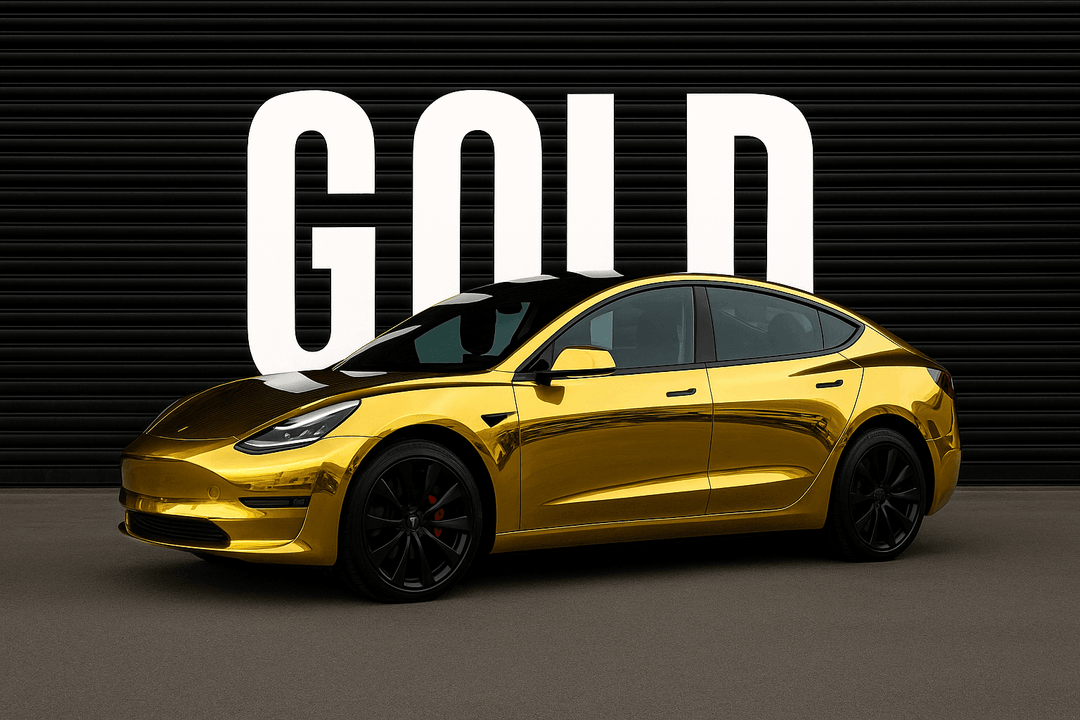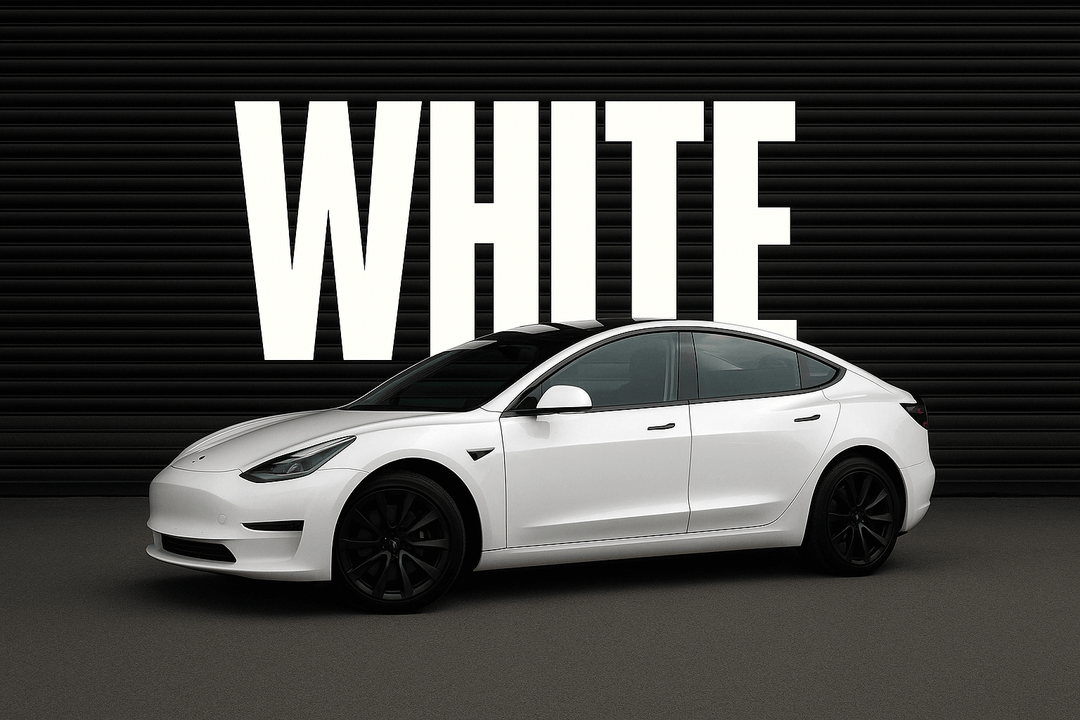What Is Color Paint Protection Film
Color Paint Protection Film, often referred to as color PPF, is an innovative solution that combines vehicle protection with visual customization. It offers all the strength and durability of traditional clear PPF while adding the design flexibility of colored vinyl. With a range of finishes and color options, this product allows car owners to protect their paint and upgrade the look of their vehicle at the same time.
Unlike regular clear paint protection film, color PPF comes in pre-tinted shades such as matte black, gloss white, satin gray, and more. It wraps the vehicle in a smooth, paint-like layer that guards against chips, scratches, and harsh weather. The result is a finish that looks professionally painted while delivering excellent protection against everyday damage.
This growing trend is quickly becoming a preferred choice for car enthusiasts and luxury vehicle owners. Even major manufacturers have started offering it directly. Tesla, for example, now provides factory-installed color PPF packages for the Model 3 and Model Y in select North American markets.
In the sections that follow, we will take a closer look at how color PPF works, what makes it different from vinyl wraps and clear films, and why more drivers are choosing it to elevate both the style and longevity of their vehicles.
How Does Color PPF Work?
Color Paint Protection Film is engineered with advanced multi-layer technology, and each layer of the film plays a specific role in delivering protection, color, and durability. It works by forming a durable, flexible outer layer that preserves the vehicle’s original finish while offering a clean and stylish new appearance.
Multi-Layer Construction
Color PPF typically consists of the following layers:
-
Top Coat Layer: This is a self-healing surface that can repair light scratches and swirl marks with heat, whether from sunlight or warm water. It also resists stains from bird droppings, bug splatter, and environmental contaminants.
-
TPU Base Layer: Thermoplastic polyurethane (TPU) is the core of the film. This flexible and impact-resistant layer is responsible for absorbing minor abrasions, protecting the paint from rock chips, and maintaining the film’s clarity and stretchability over time.
-
Colored Pigment Layer: This layer gives the film its color or finish, such as gloss, satin, or matte. It eliminates the need for a separate vinyl wrap, allowing you to change the look of your car while still receiving full paint protection.
-
Adhesive Layer: A pressure-sensitive adhesive ensures strong bonding to the vehicle’s surface without damaging the paint. It allows for secure installation and clean removal when it’s time to replace or upgrade the film.
Built-In Protection Features
In addition to its layered construction, color PPF is enhanced with several protective properties:
-
Self-Healing Surface: Fine scratches and scuffs disappear when exposed to heat, keeping your car looking newer for longer.
-
UV Resistance: The film blocks harmful ultraviolet rays that cause fading or oxidation in automotive paint, especially in sunny or high-exposure climates.
-
Stain Resistance: It prevents staining from tree sap, road grime, oil, and other common contaminants.
-
Hydrophobic Finish: The surface repels water and dirt, making it easier to clean and maintain. Rain beads up and rolls off, reducing the chance of water spots or mineral buildup.
Is Color PPF the Same as Traditional Clear PPF?
Color paint protection film and traditional clear PPF serve similar purposes, but they are not always built the same way. While both are designed to protect your vehicle's paint, the key difference lies in how they combine protection with visual enhancement.
A true color PPF is made using the same advanced technology as high-quality clear PPF. It includes multiple layers such as a self-healing top coat, a durable TPU base, and a pressure-sensitive adhesive. What sets it apart is the addition of a colored pigment layer, which allows the film to deliver both protection and style in a single application. This makes it function as both a paint protection film and a color wrap, offering solid finishes in gloss, matte, or satin, along with long-term durability.
However, not all color PPF on the market offers this level of performance. Some films marketed as color PPF are actually closer to decorative vinyl. These versions may look similar, but are usually thinner, less protective, and lack the self-healing properties found in true PPF. While they still offer some surface protection, they are not as effective in resisting impact, abrasion, or environmental wear.
Battle of the Films: Color PPF vs. Vinyl Wrap
For years, vinyl wrap was the top choice for anyone looking to change the look of their vehicle. It offered a wide variety of colors, finishes, and textures while remaining relatively affordable. But now, color paint protection film (color PPF) is gaining ground as a more advanced option, especially for car owners who want both visual impact and real protection.
Let’s compare these two popular films across key categories to help you decide which is right for your vehicle.
Material Composition
Color PPF is made from thermoplastic polyurethane (TPU), a durable and flexible material that is built to absorb impacts and resist damage. It is specifically engineered for paint protection, with a colored layer integrated into the film for aesthetic appeal.
Vinyl wrap, on the other hand, is typically made from polyvinyl chloride (PVC) or similar plastics. While it offers excellent color variety and surface finishes, it is thinner and lacks the impact-resistance that TPU provides.
Purpose
The main function of color PPF is protection. It forms a barrier against stone chips, scratches, bug splatter, and bird droppings while giving the vehicle a clean, customized appearance. It performs like a wrap and a protective shield at the same time.
Vinyl wrap is mostly used for visual transformation. It is ideal for changing the color, adding graphics, or applying special textures such as carbon fiber or brushed metal. However, it does not provide significant protection against road debris or physical impacts.
Thickness
Color PPF is significantly thicker, usually ranging from 6 to 8 mil. This added thickness is what makes it effective against physical wear and tear.
Vinyl wrap is thinner, typically between 2.5 to 4 mil. While easier to handle during installation, it does not offer the same level of durability under stress.
Protection Level
Color PPF offers superior protection. It resists chips, surface scratches, chemical stains, and even UV damage. Many products include self-healing top coats that erase fine swirls when exposed to heat or sunlight.
Vinyl wrap provides minimal protection. It can shield paint from minor scuffs and fading but is not designed to absorb impacts or prevent physical damage.
Installation Process
Installing color PPF requires professional skill and precision. Due to its thickness and elasticity, it must be carefully applied using exact techniques to avoid stretching, distortion, or bubbles. Installers often use plotters or custom templates for accurate placement.
Vinyl wrap is easier to install, especially for those with some experience. It can be heated and stretched to fit curves and contours and is more forgiving if repositioned during the process. While professional application is still recommended, it is more DIY-friendly than PPF.
Removability
Color PPF can be removed cleanly with the right tools and techniques, usually without damaging the paint underneath. It is designed to come off after years of service while preserving the factory finish.
Vinyl wrap is also removable, but the process can vary depending on the adhesive quality and how long it has been on the car. Older or low-grade vinyl may leave residue or lift paint if not removed carefully.
Durability
Color PPF is built to last. It withstands harsh environments, UV rays, and everyday wear. Most color PPFs have a lifespan of 5 to 10 years, depending on brand and maintenance.
Vinyl wrap is more vulnerable to fading, scratches, and peeling over time. Its lifespan is typically 3 to 5 years, especially in areas with intense sunlight or poor care.
Cost
Color PPF is the more expensive option, with full vehicle installations often ranging between $5,000 and $8,000 or more. The added cost reflects its dual function as a wrap and protection film.
Vinyl wrap is more budget-friendly, with full wrap pricing typically between $2,000 and $4,500, depending on material and vehicle size. It is a great option for short-term transformations or frequent style changes.
How to Choose the Right Color PPF
Choosing the right color paint protection film involves more than just picking your favorite color or finish. If you want the film to look great, last for years, and truly protect your vehicle’s paint, there are several important features to evaluate before you buy. Whether you plan to install it yourself or have it done professionally, the quality of the film and its performance characteristics will have a direct impact on the outcome.
Here are the top factors to consider when selecting a high-quality color PPF:
1. Installation Method: Dry Apply vs Wet Apply
One of the first things to look for is the installation method the film requires. Many traditional PPFs use a wet application process, which involves applying the film with the help of slip solutions or water-based adhesives. This method can work well in professional settings but tends to be messier, more complex, and harder to manage for DIY users.
If you're installing the film yourself, look for a brand that offers a dry apply system. Dry apply films are designed with built-in air release channels that allow you to remove air bubbles by simply pressing them out with a squeegee. There’s no moisture to worry about, so adhesive bonding happens more consistently and quickly. It also allows for easier repositioning during installation and usually requires fewer tools. Most dry apply films have shorter curing times, which means you can complete the job faster and enjoy your new finish sooner.
2. Adhesive Quality and Durability
The effectiveness of any PPF starts with its adhesive layer. This part of the film determines how well it bonds to your vehicle and how long it will stay in place without peeling or lifting. Look for films that use automotive-grade, pressure-sensitive adhesives that have been tested for long-term durability.
High-quality adhesives should withstand UV exposure, extreme heat or cold, and road chemicals like salt or tar. This is especially important for color PPF, where any lifting or discoloration can quickly ruin the visual effect. Avoid products with unknown adhesive formulas or those without performance testing. Trusted brands typically highlight their adhesive technology as part of their product specifications.
3. Finish and Color Quality
Not all color PPF finishes are created equal. A vibrant, consistent finish that mimics the look of high-end paint can transform your vehicle’s appearance, but a poor finish can fade, discolor, or develop surface imperfections over time.
Choose a product with a high-quality top coat that resists UV rays, oxidation, stains, and scratches. The finish should retain its depth, texture, and clarity even after years of exposure to sunlight and washing. This is particularly important for satin or matte finishes, which can quickly lose their uniform appearance if the top layer is too soft or unprotected.
It’s also worth checking whether the brand offers a wide range of tested color options. Premium manufacturers often develop and test colors in controlled environments to ensure consistent results from one roll to another. Popular options include chalk white, satin black, gloss gray, and even custom tints like frozen blue or metallic green.
4. Warranty and Brand Reputation
Always consider the warranty coverage offered with the product. A quality color PPF should come with a multi-year warranty, typically five to ten years, that covers yellowing, cracking, and peeling. If the manufacturer does not offer clear warranty terms, it may be a sign that the product is not built for long-term use.
Research the brand’s reputation in the automotive community. Look for verified reviews, case studies, or installation videos that demonstrate how the film performs in real-world conditions. Brands that specialize in automotive protection and have established product lines tend to deliver more reliable results.
How Much Does Color Paint Protection Film Cost?
The cost of color paint protection film can vary depending on the size of your vehicle, the complexity of the installation, the finish you choose, and where you have the work done. Since color PPF combines both styling and protection, it tends to cost more than standard vinyl wrap or clear PPF. However, many vehicle owners consider the investment worthwhile for the long-term value it provides.
|
Area |
Average Cost |
|
Full Front (bumper, hood, fenders) |
$1,500 to $2,500 |
|
Full Vehicle Wrap (Color PPF) |
$5,000 to $8,000 or more |
|
Mirrors, Door Edges, Trunk |
$200 to $500 |
What Influences the Cost?
Several factors will affect your final price:
-
Vehicle Size and Shape: Larger vehicles like SUVs or trucks require more material and time to install, leading to higher costs.
-
Color and Finish: Specialty finishes like satin, matte, or metallic may come at a premium compared to standard gloss colors.
-
Installer Expertise: Professional installers with certified training often charge more, but their experience ensures a higher-quality result with fewer risks of peeling or bubbling.
-
Location: Labor rates and market demand can vary significantly between regions or cities. Urban areas with high-end vehicle markets may charge more.
Is Color PPF Worth It?
For many car owners, color PPF is a smart investment, especially when long-term value and vehicle protection are priorities.
-
Dual Benefit: It enhances your vehicle’s appearance while offering high-level paint protection in one product.
-
Long-Term Savings: By preventing rock chips, scratches, and sun damage, color PPF reduces the need for paint correction, touch-ups, or repainting over time.
-
Better Resale Value: Preserving the original paint underneath helps maintain your car’s value. Buyers are more likely to pay a premium for a vehicle that looks well-maintained and has no hidden repaint history.
Where to Buy High-Quality Color PPF
If you're looking to upgrade your vehicle with a paint protection film that also enhances its appearance, it’s important to choose a product that delivers both performance and style. High-quality color PPF should offer more than just color—it should include advanced protective features, long-term durability, and a professional-grade finish that matches or exceeds factory paint.
When shopping for color PPF, here’s what to look for:
-
Self-Healing Surface: Allows light scratches and swirl marks to disappear with heat or sunlight
-
UV Protection: Helps prevent fading, oxidation, and paint discoloration
-
Stain and Chemical Resistance: Protects against bird droppings, bug splatter, water spots, and road grime
-
Flexible Application: Designed to stretch and conform to complex surfaces with a seamless fit
Available Finishes and Color Options
At Yeswrap, you can find a complete selection of premium color PPF films in a variety of finishes and shades to suit every style:
Gloss Color PPF
-
Piano Black
-
Gloss White
-
Chalk Gray
Matte PPF
-
Frozen White
-
Stealth Black
Satin PPF
-
Champagne Satin
-
Satin Metallic Red
Specialty PPF
-
Metallic Finish: Adds shimmer and depth without paint
-
Carbon Fiber PPF: Realistic textured pattern for performance styling
-
Color-Changing PPF: Limited availability in chameleon and gradient designs for a truly unique effect
Yeswrap color PPF is also available in a wide selection of solid shades, including black, white, red, green, blue, yellow, orange, pink, and purple. Each film is designed with multi-layer TPU construction, offering both style and protection in a single solution.
Why Buy from Yeswrap?
Yeswrap combines cutting-edge materials with industry-tested adhesives to deliver PPF products that are easy to install, built to last, and visually impressive. Whether you're protecting your daily driver or customizing a high-end performance car, Yeswrap gives you a reliable and stylish way to upgrade your vehicle with confidence.
Explore the full range of color paint protection film at Yeswrap and find the perfect combination of finish, color, and durability for your project.
FAQs About Color Paint Protection Film
How long does it last?
High-quality color PPF typically lasts 5 to 10 years, depending on the brand, finish, and how well it is maintained. Regular hand washing, avoiding abrasive cleaners, and parking in shaded areas can help extend the lifespan of the film.
Can color PPF be removed?
Yes, color PPF can be removed by a professional without damaging the original paint underneath. The film is designed to come off cleanly, making it a great choice for those who want to protect their factory finish while still being able to update or reverse the customization in the future.
Does it fade over time?
Premium color PPF is made with UV-resistant pigments and top coatings that prevent fading and discoloration. However, lower-quality films or extended exposure to harsh sunlight without proper care can result in some fading. Choosing a reputable brand and following maintenance guidelines will help preserve the film’s appearance.
Can it be applied on top of vinyl wrap?
It is not recommended to apply color PPF over an existing vinyl wrap. Doing so can affect the film’s performance, bonding, and appearance. For best results, apply color PPF directly to clean, factory-painted surfaces. If your vehicle is already wrapped and you want to upgrade to color PPF, it’s best to remove the wrap first before proceeding with installation.
Related Articles:
The Ultimate Guide to Colored PPF


